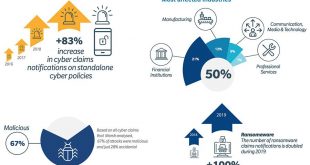Introduction: Unraveling the Cyber Siege
In the annals of cybersecurity, the year 2023 witnessed a seismic event that reverberated across industries worldwide: the relentless cyber onslaught targeting Progress Software’s MOVEit Transfer file management program. Orchestrated by the notorious group “cl0p,” these attacks plunged countless organizations into turmoil, compromising sensitive data and jeopardizing the privacy of millions. This article delves into the technology behind the breaches, their widespread impact, mitigation efforts, and the lessons learned from this harrowing episode in cybersecurity history.
The Technology: Breaching the Digital Bastion
MOVEit Transfer, a trusted file management solution utilized by organizations globally, unwittingly became the Achilles’ heel exploited by hackers to breach digital fortresses. Leveraging a vulnerability in the software, the cl0p group gained unauthorized access to sensitive information, including social security numbers, medical records, and financial data.
A Flaw Opens the Door: The culprit behind the havoc was a zero-day vulnerability (CVE-2023-34362) in MOVEit Transfer. This previously unknown flaw acted as a digital backdoor, allowing cl0p to infiltrate the systems of unsuspecting organizations. Once inside, they gained access to a treasure trove of sensitive data, including social security numbers, medical records, and financial information.
This insidious exploitation of a software flaw underscored the critical importance of robust cybersecurity measures in safeguarding digital assets and preserving the trust of stakeholders.
The Impact: Ripples of Disruption
Orchestrated by a group known as “cl0p,” these attacks sent shockwaves across the globe, compromising data from hundreds of organizations and impacting nearly 40 million individuals.
The MOVEit Meltdown wasn’t a targeted attack – it was a domino effect. The fallout from the MOVEit Transfer cyberattacks rippled across diverse sectors, leaving a trail of disruption and chaos in its wake. Educational institutions, government agencies, healthcare providers, financial institutions, and media organizations found themselves ensnared in a web of breaches, collectively experiencing a global privacy catastrophe.
From Flaw to Global Crisis: The consequences were dire. Privacy was compromised on a massive scale, with millions potentially facing the ramifications of exposed personal information. The attack served as a stark reminder of the vulnerabilities inherent in our reliance on technology and the potential for widespread chaos from a single misstep.
The far-reaching consequences of the attacks underscored the interconnected nature of digital systems and the imperative for organizations to bolster their cybersecurity posture to mitigate future risks.
Mitigation Efforts: Responding to the Crisis
In the aftermath of the breaches, a concerted effort unfolded to contain the damage and fortify defenses against future incursions. Progress Software swiftly issued patches to address the vulnerabilities in MOVEit Transfer, empowering organizations to fortify their defenses and safeguard against further exploitation. Incident response teams, cybersecurity firms, and affected organizations collaborated tirelessly to detect, respond to, and recover from breaches, underscoring the collective resilience of the cybersecurity community in the face of adversity. However, the fight wasn’t over. Cl0p remained relentless, employing data extortion tactics to further pressure the affected entities.
What steps can organizations take to protect themselves from similar attacks?
In the wake of the MOVEit Meltdown, several crucial steps can help organizations protect themselves from similar attacks:
Software Management:
- Patch early and often: Implement a robust patch management system to promptly apply security updates and address vulnerabilities like the one exploited in MOVEit Transfer. Prioritize patching critical systems and software promptly after updates are released.
- Minimize your attack surface: Limit the software and applications used within your organization. Evaluate whether each program is truly necessary and disable or remove unused ones. This reduces potential entry points for attackers.
- Stay informed: Proactively subscribe to security advisories and alerts from software vendors and trusted cybersecurity resources. Stay updated on emerging threats and vulnerabilities to take preventive measures.
Data Security:
- Implement data encryption: Encrypt sensitive data both at rest and in transit to protect it from unauthorized access, even if attackers breach your systems.
- Enforce strong access controls: Implement granular access controls that restrict access to sensitive data based on the principle of least privilege. Only authorized personnel with a legitimate need should access specific data.
- Regularly backup your data: Maintain regular backups of critical data to facilitate recovery in case of ransomware attacks or data breaches. Consider storing backups offline or in a secure cloud environment.
Security Awareness and Training:
- Educate employees: Regularly train employees on cybersecurity best practices, including phishing awareness, password hygiene, and identifying suspicious activity. Foster a culture of security awareness where employees are empowered to report potential threats.
- Implement multi-factor authentication (MFA): Use MFA for all sensitive accounts and systems to add an extra layer of security beyond passwords. Require strong, unique passwords and enforce regular password changes.
- Conduct regular security assessments: Proactively conduct vulnerability assessments and penetration testing to identify and address security weaknesses in your systems before attackers can exploit them.
Additional Measures:
- Segment your network: Implement network segmentation to isolate critical systems and data from less sensitive areas. This can limit the damage attackers can inflict if they breach your network.
- Invest in endpoint security solutions: Utilize endpoint detection and response (EDR) and antivirus/antimalware solutions to detect and respond to malicious activity on individual devices within your network.
- Develop a cybersecurity incident response plan: Have a documented plan outlining steps to take in case of a security incident, including containment, investigation, and recovery. Regularly test and update your plan.
By following these steps and fostering a proactive security culture, organizations can significantly reduce their risk of falling victim to attacks like the MOVEit Meltdown. Remember, cybersecurity is an ongoing process, and continuous vigilance is key to staying ahead of evolving threats.
Conclusion: Lessons Learned and Future Imperatives
The MOVEit Transfer cyberattacks serve as a sobering reminder of the ever-present threat posed by cyber adversaries and the imperative for organizations to remain vigilant and proactive in safeguarding their digital assets. By learning from past incidents, investing in robust cybersecurity measures, and fostering a culture of proactive risk management, organizations can better protect themselves and their stakeholders from the pervasive threat of cyberattacks.
Remember, cybersecurity is an ongoing process, and continuous vigilance is key to staying ahead of evolving threats. As the digital landscape continues to evolve, resilience, agility, and adaptability will be paramount in navigating the complex and ever-changing cybersecurity landscape. Together, let us forge a path towards a more secure and resilient digital future.
Reference and Resources also include:
https://thecyberexpress.com/biggest-cyberattacks-of-2023/#google_vignette
 International Defense Security & Technology Your trusted Source for News, Research and Analysis
International Defense Security & Technology Your trusted Source for News, Research and Analysis


